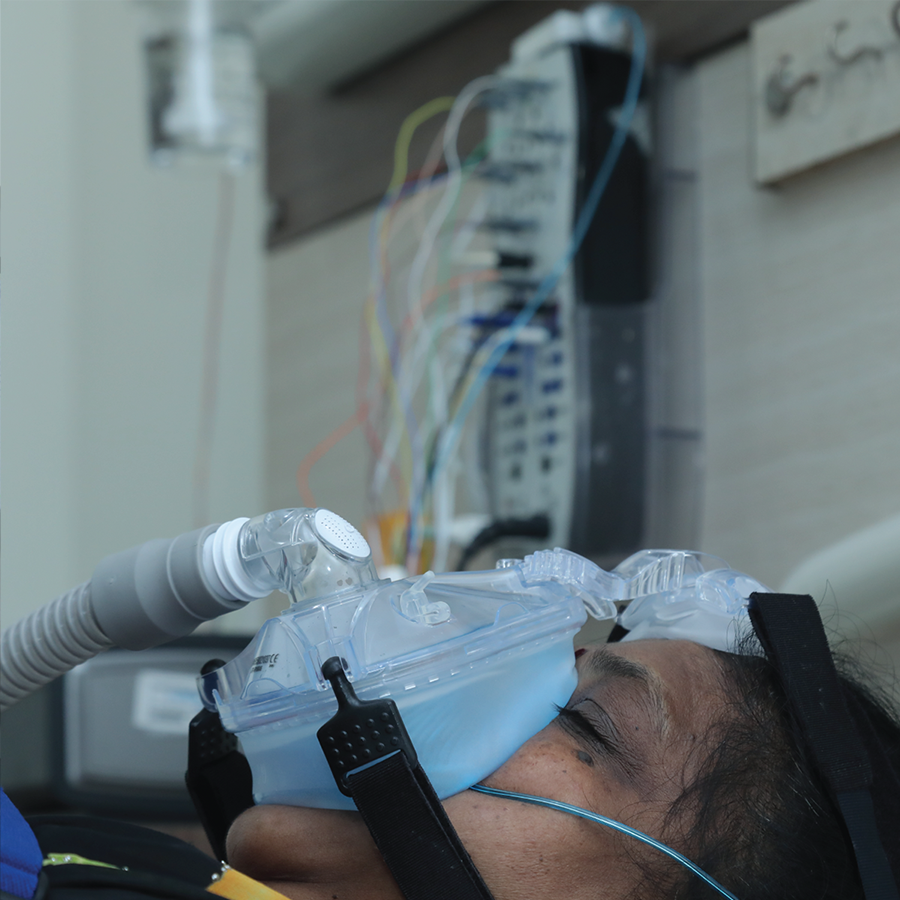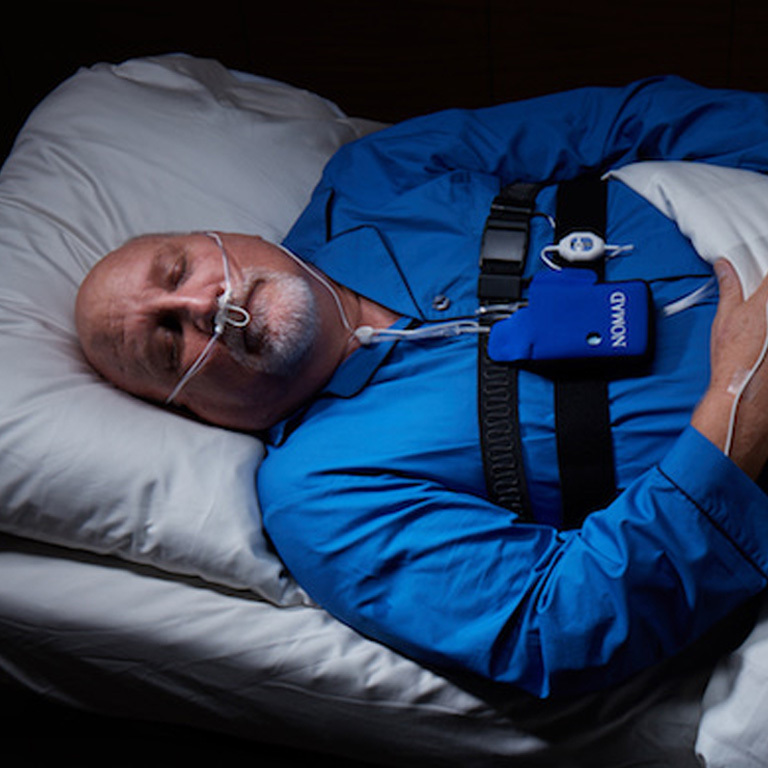How a Sleep Study Can Transform Your Sleep Patterns: Insights and Services Available
A sleep research works as a vital device for individuals seeking to recognize and enhance their rest patterns. It supplies a complete evaluation of rest habits and potential conditions. By evaluating various metrics, healthcare specialists can determine underlying concerns that disrupt corrective rest. This procedure not just aids in diagnosis but also sets the stage for customized therapy strategies. What insights might a rest research disclose concerning your very own rest behaviors?
Comprehending Sleep Researches: What to Expect
When individuals prepare for a sleep research study, they frequently wonder what the experience will certainly require. These researches, commonly carried out in a sleep clinic, goal to check various physical specifications throughout rest. Upon arrival, individuals are greeted by skilled technicians that assist them via the process. The setting is made to be comfortable, enabling for a natural rest experience. Participants might be asked to complete questionnaires regarding their sleep practices and clinical background, which assists in the examination.
As the night advances, sensors are attached to the body to track brain waves, heart price, and breathing patterns. While the arrangement might feel uncommon, the goal is to gather accurate data on the person's sleep patterns. The entire procedure is non-invasive and positions no threat to the individual. Ultimately, the data gathered during the sleep study is essential for identifying possible rest problems and creating reliable treatment strategies.
Common Sleep Disorders Determined With Sleep Researches
Sleep research studies play an important role in determining numerous rest disorders that can significantly affect an individual's health and wellness. Common problems detected via these studies consist of obstructive rest apnea, identified by duplicated disturbances in breathing during sleep, causing fragmented sleep patterns. Another common problem is sleeplessness, which includes problem dropping or remaining asleep, usually leading to daytime tiredness and damaged performance. Uneasy legs disorder (RLS) is additionally regularly observed, causing uncomfortable feelings in the legs and an unmanageable desire to relocate them in the evening. Narcolepsy, a neurological problem that affects sleep-wake cycles, is an additional severe condition determined in sleep researches, leading to too much daytime drowsiness and abrupt sleep attacks. Parasomnias, which incorporate unusual actions throughout sleep, such as sleepwalking or evening fears, are additionally noted. Early recognition of these conditions can promote timely intervention and boost total sleep top quality.
The Refine of a Sleep Research: From Preparation to Outcomes
The procedure of a sleep research may appear daunting, it is a methodical and organized approach designed to collect necessary information about a person's rest patterns. A health care supplier carries out a detailed examination, discussing rest history and signs and symptoms with the individual. This analysis assists identify the certain emphasis of the study.
Preparation generally entails standards on sleep health and medication changes before the research study. Individuals may be instructed to avoid caffeine and alcohol to guarantee accurate results. On the evening of the research, electrodes and sensors are placed to monitor mind activity, heart price, breathing, and activities throughout rest.
The information collected is meticulously evaluated by rest experts, who recognize any kind of problems or patterns indicative of sleep disorders. Following this evaluation, a follow-up appointment is arranged to talk about the searchings for and potential treatment choices customized to the person's demands, helping with improved rest top quality.

Kinds of Sleep Researches: In-Lab vs. Home Sleep Tests
Two main sorts of sleep studies exist: in-lab researches and home rest tests, each providing to various needs and situations. In-lab research studies typically happen in a rest clinic where patients are monitored over night by medical care specialists. This method permits for thorough data collection on different rest criteria, such as mind task, oxygen levels, and heart price. Patients are commonly connected to numerous sensing units, supplying detailed understandings right into their sleep problems, including sleep apnea and narcolepsy.
Alternatively, home sleep tests use a much more convenient choice for people that favor to carry out analyses in their own environment. These mobile tools keep track of vital metrics like air flow, oxygen saturation, and snoring. While home examinations are much less complete than in-lab studies, they work as a functional solution for detecting common rest conditions. Ultimately, the option in between these two kinds of sleep researches depends on individual preferences, medical needs, and the extent of sleep-related concerns.
Translating Your Sleep Research Results: Key Metrics Clarified
Comprehending the outcomes of a sleep research is vital for people seeking insights into their rest wellness. Key metrics normally analyzed in sleep research studies include the Apnea-Hypopnea Index (AHI), which gauges the variety of apneas and hypopneas per hour of sleep. AHI values aid establish the severity of sleep apnea, with greater ratings indicating much more significant issues. Another crucial metric is the complete bedtime (TST), which mirrors the overall duration of rest during the study. Rest efficiency, the proportion of time spent asleep to time invested in bed, is additionally vital; higher percents indicate much better sleep high quality. Furthermore, the percentage of sleep spent in various phases-- light, deep, and REM-- supplies insights right into rest architecture. Understanding these metrics gears up patients with the understanding required to discuss their rest patterns with healthcare carriers, leading the way for informed choices concerning their rest health.
Therapy Alternatives and Referrals Based on Your Sleep Research study
When a rest research study discloses problems such as sleep apnea or various other rest disorders, numerous treatment alternatives and suggestions become offered to boost overall sleep health. For obstructive rest apnea, constant positive air passage pressure (CPAP) therapy is generally suggested, providing a stable stream of air to maintain respiratory tracts open throughout rest. Conversely, oral appliances might be recommended for light to moderate situations, repositioning the jaw to stop respiratory tract obstruction.
In situations of insomnia, cognitive behavior modification for sleeplessness (CBT-I) is commonly recommended, concentrating on behavioral modifications and thought patterns that disrupt sleep. Furthermore, way of living alterations such as fat burning, routine exercise, and preventing alcohol or high levels of caffeine before bedtime might improve rest high quality.

Structure Healthy Rest Behaviors: Tips for Better Relax
Structure healthy and balanced sleep routines is important for attaining restorative rest. Developing a constant rest routine, restricting screen time before bed, and developing a comfy rest environment can greatly enhance rest quality. These techniques offer as foundational steps for people looking for much better sleep end results.
Establish a Rest Regimen
Establishing a regular sleep regimen is crucial for advertising healthy and balanced rest practices and enhancing general health. Sleep Study Bangalore. A routine rest routine, where individuals go to sleep and wake up at the same time every day, enhances the body's all-natural circadian rhythms. This predictability helps manage the sleep-wake cycle, bring about improved sleep top quality. Producing a soothing pre-sleep ritual, such as analysis or exercising relaxation methods, can indicate the body that it is time to relax. Additionally, optimizing the rest setting-- by preserving a comfortable temperature, minimizing sound, and making sure darkness-- can better sustain relaxed rest. By focusing on these techniques, individuals can cultivate a sustainable sleep routine that fosters restorative sleep and adds to much her response better physical and mental health and wellness
Limitation Screen Time
As individuals progressively rely upon displays for entertainment and interaction, restricting display time prior to bed has actually come to be vital for promoting better sleep. Study shows that exposure to blue light produced by gadgets such as smartphones, tablet computers, and computers can disrupt the production of melatonin, the hormonal agent in charge of managing sleep. Experts advise turning off displays at least one hour before bedtime to improve sleep high quality. Taking part in different activities, such as checking out a book or practicing leisure methods, can help people relax and prepare for rest. By purposely lowering screen time, people can grow healthier rest patterns, resulting in improved overall wellness and enhanced daytime performance. Prioritizing this facet of sleep health is crucial for lasting wellness.
Develop a Sleep Refuge
Developing a sleep haven can substantially enhance an individual's capacity to achieve peaceful rest. This setting must prioritize convenience visit this site and tranquility, incorporating components that promote relaxation. An ideal mattress and cushions are necessary, as they directly influence rest top quality. Furthermore, the space needs to be dark, silent, and cool; using blackout drapes and white sound devices can promote this environment. Individualizing the space with calming colors and fragrances, such as lavender, can even more boost leisure. Lessening mess additionally adds to a serene environment, allowing for mental quality - Sleep Study Bangalore. By thoughtfully developing a rest sanctuary, people can promote much healthier rest habits and create a regular regimen, inevitably bring about boosted general wellness and corrective remainder
Regularly Asked Questions
For how long Does It Require To See Improvements After a Rest Research study?
Improvements after a rest study can differ, however numerous individuals start to observe positive changes within a few weeks. Consistent follow-up and adherence to advised treatments play important duties in attaining suitable results.
,aspect=fit)
Can Children Undergo Sleep Studies, and How Are They Different?
Yes, kids can undertake rest research studies, which vary from adult researches in keeping track of techniques and tools. Pediatric evaluations often include child-friendly atmospheres and might include parent participation to guarantee comfort and precise results.
Are Rest Researches Covered by Insurance, and What Are the Expenses?
Sleep researches can be covered by insurance policy, depending on the policy and clinical necessity. Costs differ extensively, ranging from $300 to $3,000, affected by the kind of research and location of the center.
What Lifestyle Changes Can Boost the Efficiency of Sleep Research Study Outcomes?

Executing constant sleep timetables, lowering high levels of caffeine intake, creating a soothing bedtime routine, and keeping a comfy rest setting can significantly enhance the effectiveness of sleep research study results, advertising much better sleep quality and general health.
How Frequently Should I Repeat a Sleep Research Study for Ongoing Issues?
Individuals experiencing recurring rest concerns ought to think about repeating a sleep research every one to two years, or as suggested by healthcare specialists, to monitor modifications and readjust therapy strategies successfully based on their developing sleep patterns. (Sleep Study Bangalore)
Rest research studies play a crucial duty in determining various rest disorders that read this post here can greatly affect an individual's health and well-being. Common disorders found with these studies consist of obstructive rest apnea, characterized by repeated disturbances in breathing throughout rest, leading to fragmented sleep patterns. When a rest research discloses concerns such as sleep apnea or various other sleep conditions, various treatment choices and suggestions end up being readily available to improve overall rest health and wellness. Establishing a consistent sleep routine, restricting screen time prior to bed, and developing a comfortable rest atmosphere can significantly improve sleep quality. Furthermore, enhancing the sleep setting-- by maintaining a comfortable temperature, reducing noise, and making sure darkness-- can even more support relaxed rest.